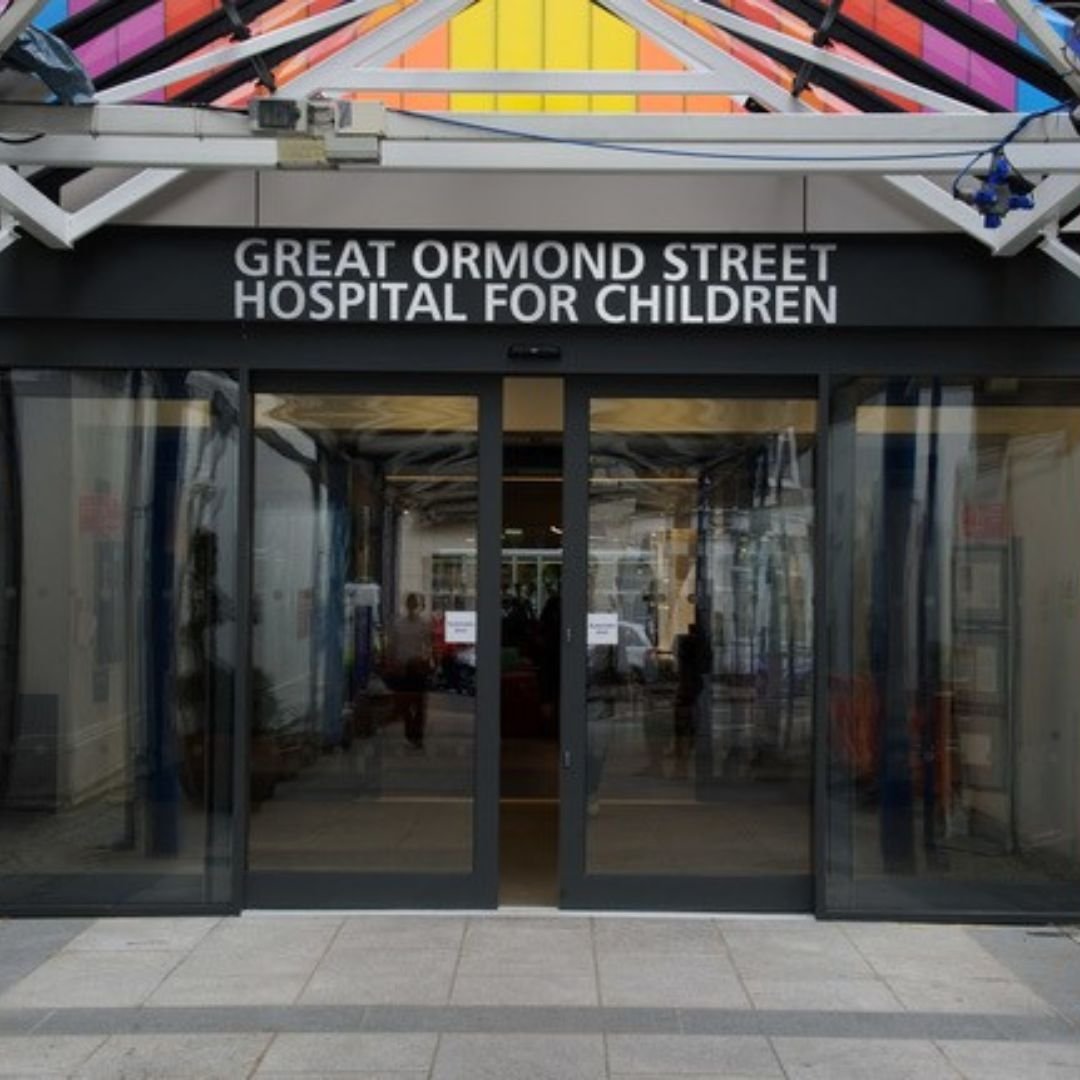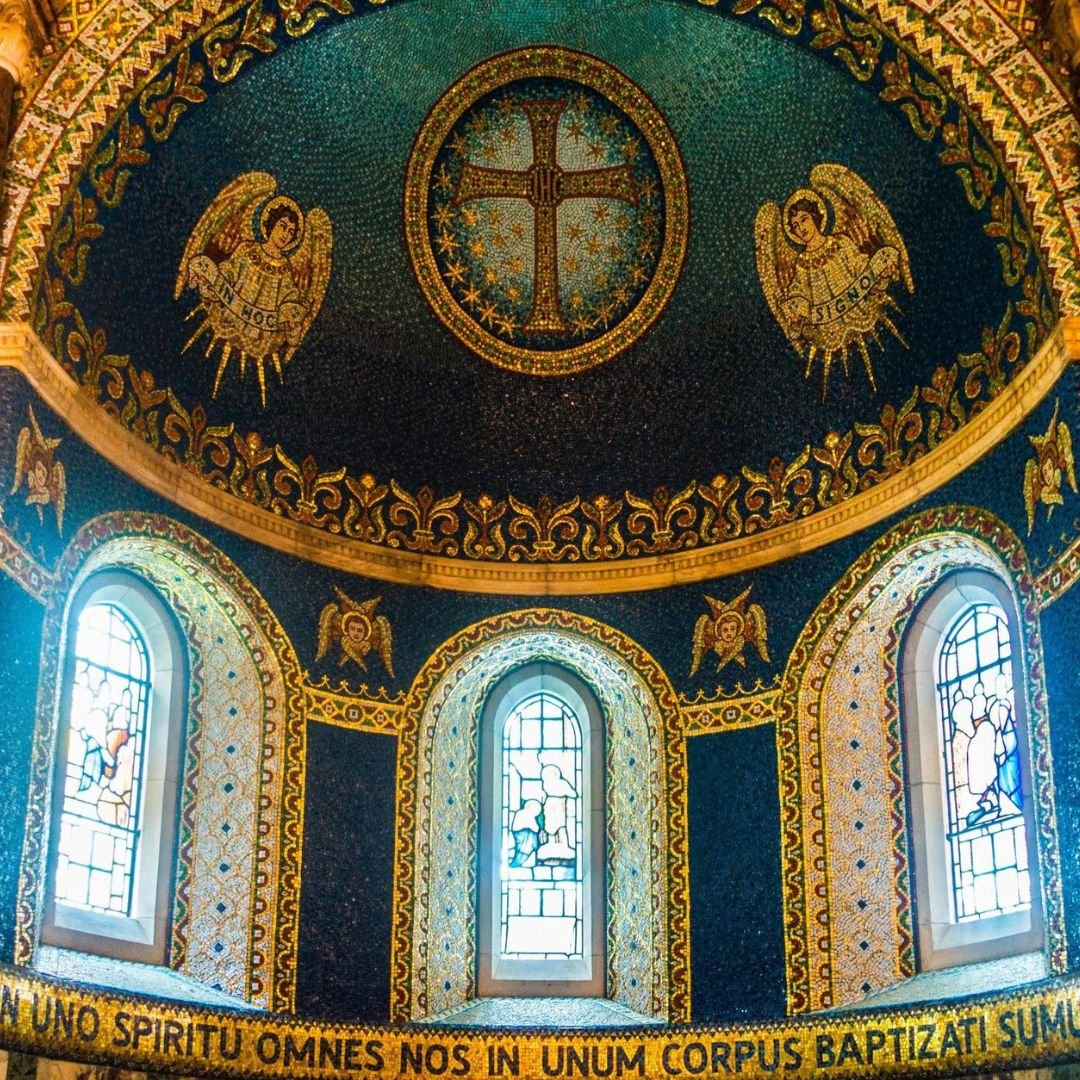St Christopher's Chapel, London: Grade II Listed Gem
The stunning, Grade II listed Chapel of St Christopher in London is stepped with history.
It is justifiably described as a real ‘tour de force’ of high Victorian ecclesiastical style, and arguably the most sumptuous hospital chapel in the country.
Oscar Wilde said that it is “the most delightful private chapel in London”, and who are we to argue with him?
St Christopher's Chapel is the chapel of Great Ormond Street Hospital in London and is noted for its highly decorated interior.
In the 1980s, a decision was made to demolish and rehouse Great Ormond Street Hospital.
As the Chapel is a Grade II listed building, it could not be demolished along with the old hospital in the late 1980s, nor was it practicable to incorporate it on its previous site in the redevelopment plans.
In association with English Heritage, it was therefore decided to move it ‘en bloc’ to the position it occupies today.
This was the first time that a building of this size and importance had been moved, so there was no precedent to follow.
The whole building was heavily braced to withstand any possible movement, and all the inner surfaces fully protected (the stained glass and furniture were removed beforehand for repair and restoration).
After underpinning by a huge concrete raft the Chapel was enclosed in an enormous waterproof box and then lowered to the ground (it had previously been at first floor level).
It was then moved on greased ‘slides’ by hydraulic rams to its new position where it arrived without mishap and with half an inch to spare.
A full photographic record of this remarkable operation was made and is kept in the hospital archives.
The interior has been completely restored and returned to its original condition as far as possible, including the stained glass, the metal work, wall tablets, chandeliers and furniture.
New carpets and upholstery were provided to match the old.
The ancient single manual pipe organ, too expensive to move, restore and maintain, was quietly laid to rest and replaced with an electronic instrument which occupies the same position.
Four massive pillars of rare Devonshire marble, with carved and gilded capitals embodying mythical beasts and foliage, support the central dome, around the base of which can be seen the ‘Angel Orchestra’ and at the apex ‘The Pelican in Her Piety’.
On the north and south walls are two large mural paintings and to the left and right of the door are the figures of St. Peter and St. Paul.
The stained glass depicts the Nativity, the childhood of Christ and biblical scenes connected with children, and above is a series of angels holding tables inscribed with the Christian Virtues.
The terrazzo floor is by the Italian mosaicist Antonio Salviati and is said to be modelled on a pavement in St. Mark’s, Venice.
There are a number of Bible quotes with accompanying murals decorating the walls.
These include "Suffer little children to come unto me" (Luke 18:16) and "feed my lambs + feed my sheep" (John 21:16).
Above the door it states: "I was glad when they said unto me let us go into the House of the Lord" (Psalm 122:1).
The Chapel is of relatively modest dimensions, though the immediate impression is of a much larger building.
It’s an incredible effect created by the excellence of the architectural proportions, and the grandeur of the decorations.
Today, the historic Chapel will continue to be at the centre of the hospital’s activities as it has been for the last 130 years, and will always be a place for prayer and contemplation, where solace may be found.
The chapel is open at all times.
There is a service of morning prayer at 10:30 am Monday to Friday, and a service of Holy Communion on Wednesdays.
Along the rear of the chapel is a row of teddy bears and other soft toys, provided by families of ill children, known as the Teddy Bear Choir.
In addition, the chapel has a prayer tree where messages of hope and support can be written for sick children at the hospital and placed on the tree.
It’s an incredible place to visit in London if you ever get the chance - the address is: Great Ormond Street Hospital for Children, NHS Trust Great Ormond Street, London, WC1N 3JH.
Another impressive chapel in London is the Chapel of St John the Evangelist, in the White Tower at the Tower of London, a unique survival (pictured below)
It is the most complete surviving example of early Anglo-Norman royal ecclesiastical architecture.
The Chapel was built as a place of worship for William the Conqueror, but it was not completed until after his death.
It was always intended to be spectacular, giving the worshiper the sense of being at the centre of a much larger church.
Its imposing columns, carved capitals, high gallery and aisle for processions were built to impress.
Experience this grand space, where medieval kings and queens would have worshipped, at the top of the White Tower.
Alfred Hawkins, Assistant Curator of the Tower of London saiid it’s ‘one of my personal favroutie places within the fortress.’
One more chapel worth mentioning within the same area is the Fitzrovia Chapel in Pearson Square, London.
The Grade II*-listed Fitzrovia Chapel (pictured above), once the chapel of the former Middlesex Hospital and now beautifully preserved and restored, is a stunning hidden gem in the heart of the city.
Never consecrated, the nineteenth century chapel, a charitable foundation, is a luminous place to get married, display a beautiful object, steep yourself in history and architecture or just sit and reflect.
Never fully consecrated, the chapel served as a place of solace, reflection and rest for staff and patients and their families.
It was always open between services, and groups of different faiths (and none) from within the hospital gathered in the tiny building throughout the working week.
Marriages between medical staff, or between very ill patients and their partners, took place here, as well as concerts, memorials, seasonable celebrations and choir rehearsals.
Many present-day visitors have spent time here before, whether as a medical professional, family member or patient and the memories they share contain moving descriptions of chapel life in the past.
The tiny chapel is open most Wednesdays between 11:00 and 19:00 (summer) and until 18:00 (winter).
You can also just sit here and reflect, whilst immersed in the beautiful architecture.
It is an opportunity to look around the chapel and see for yourself the breathtaking interior of this hidden treasure in the heart of central London.
They also have regular free mini guided tours.
It’s a beautiful hidden gem, often overlooked by many, but definitely worth a visit!
If you enjoyed this blog post, please follow Exploring GB on Facebook for daily travel content and inspiration.
Don’t forget to check out our latest blog post below!
Thank you for supporting Exploring GB.


















